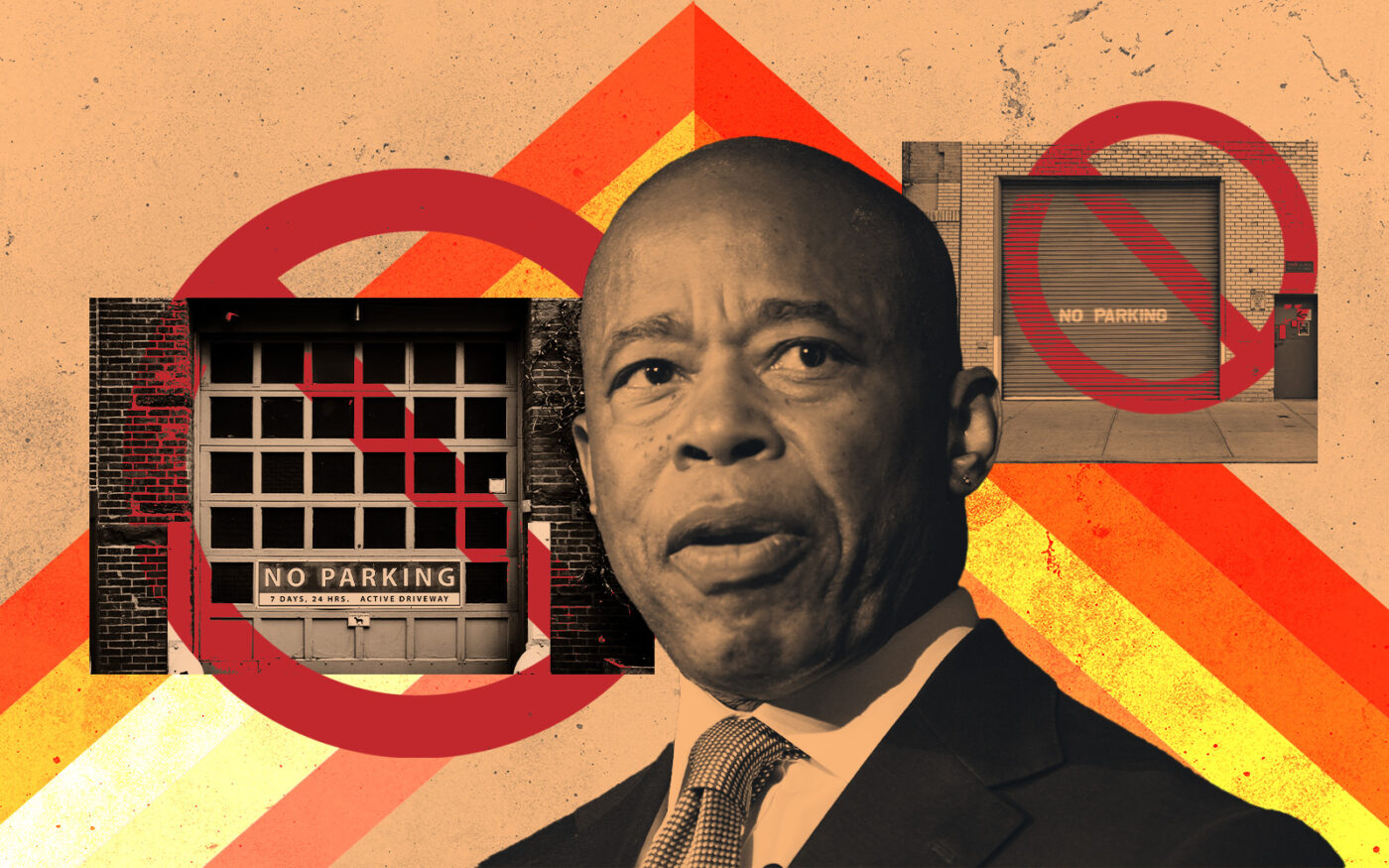 Adams launches one-stop shop to speed office conversions
Adams launches one-stop shop to speed office conversions
Trending
Adams wants to scrap parking mandates in new resi projects
Text amendment in “City of Yes” plan also includes legalizing ADUs

In a City of Yes, parking requirements are a No.
The Adams administration is proposing eliminating parking mandates for new residential construction throughout the city, part of the Zoning for Housing Opportunity text amendment. The change — one of several “City of Yes” initiatives — would leave a mark in a city where fewer than half of the residents own cars and housing production struggles to keep up with mounting demand.
Off-street parking can cost up to $150,000 per space, according to Open Plans, a group that has advocated for the repeal of the city’s parking mandates. In a report released in March, the group estimated that for every 1.2 parking spaces constructed, one unit of housing is lost, due to the exorbitant cost of the former.
The mayor had previously indicated his administration was looking at either eliminating or reducing parking requirements, and is the latest detail to emerge in his “City of Yes” proposal.
Parking mandates largely apply to projects outside Manhattan. As part of zoning changes in 2016, the city waived parking minimums for affordable and senior housing within certain districts considered to be transit rich. Since that change, the number of affordable units introduced in these districts has increased more than 36 percent on an annual basis, a December report by the Regional Plan Association found.
Other cities and states have concluded that such mandates require an increasingly unjustifiable tradeoff between financing housing units and parking spots. In 2017, Buffalo did away with its parking mandates, and last year San Diego repealed its parking minimums. California and Oregon have also limited the reach of parking requirements.
The change does not bar construction of new parking spots, but it is still likely to face pushback: New housing means new residents, which can mean more competition for already scarce street parking.
The text amendment includes a series of changes aimed at beefing up the city’s housing supply. Though wide-ranging, the changes underscore that the city still relies on the state to meet its housing goals.
At the end of last year, the mayor announced a “moonshot” target of building 500,000 homes over the next decade. That goal depended on a series of state-level actions that, while proposed in the last legislative session, failed to move forward. The administration estimates that the text amendment could create 100,000 new homes over the next 15 years.
During speeches on Thursday, the mayor and Deputy Mayor Maria Torres-Springer emphasized that the city changes would undo exclusionary zoning policies put in place decades ago.
The mayor called the proposal “the most ambitious changes to zoning in the history of New York City.”
“This is not tinkering around the edges, this is groundbreaking, literally,” Adams said.
He acknowledged that fewer units of housing will be built if Albany does not replace the tax break 421a or lift the city’s floor area ratio cap on residential space.
The text amendment would also legalize smaller apartments with shared kitchen and bathroom facilities. Current rules have complicated co-living spaces from operating legally in the city.
It also includes an expansion of the suspended Affordable Independent Residences for Senior program, which provided zoning bonuses for new senior housing. The Department of Housing Preservation and Development stopped accepting applications for the program in early 2021, citing fair housing concerns around the fact that the housing was solely available to seniors.
Under the mayor’s proposal, different affordable housing projects would be eligible, allowing the projects to be 20 percent larger. It will function similarly to the city’s existing voluntary inclusionary housing program, but it will be available in more residential districts and income levels of eligible residents will be calculated differently. For now, the affordable apartments must be reserved for individuals making an average of 80 percent area median income, though City Planning Commissioner Dan Garodnick indicated on Thursday that those levels may be adjusted.
The administration also hopes to legalize certain accessory dwelling units, after failed attempts by the state government to do so. The text amendment would allow for new units of up to 800 square feet on one- and two-family properties across the city. However, additional, state-level changes are still needed to legalize basement apartments in the city.
The text amendment would also repeal the so-called Sliver Law, which restricts the height of buildings on lots less than 45 feet wide. Previous administrations have attempted to scrap this rule, but have faced opposition from preservationists and others. Village Preservation has been one of the law’s most vocal defenders, saying that its repeal will simply result in more ultra luxury housing.
As previously reported, the zoning changes also include expansions to the types of office buildings that can be converted into housing. Under the plan, office buildings constructed prior to 1990 could be converted.
Other proposed changes include encouraging transit oriented development, as well as residential use above ground-floor retail and space in commercial corridors.
The Department of City Planning is expected to release the draft scope of work for the text amendment next week, and the proposal is expected to begin the city’s public review process next spring.
Read more
 Adams launches one-stop shop to speed office conversions
Adams launches one-stop shop to speed office conversions
 The skinny on the “sliver law”: City may ax rule that blocks 95,000 homes
The skinny on the “sliver law”: City may ax rule that blocks 95,000 homes
 Office-to-resi conversions are financially feasible, but just barely: report
Office-to-resi conversions are financially feasible, but just barely: report




